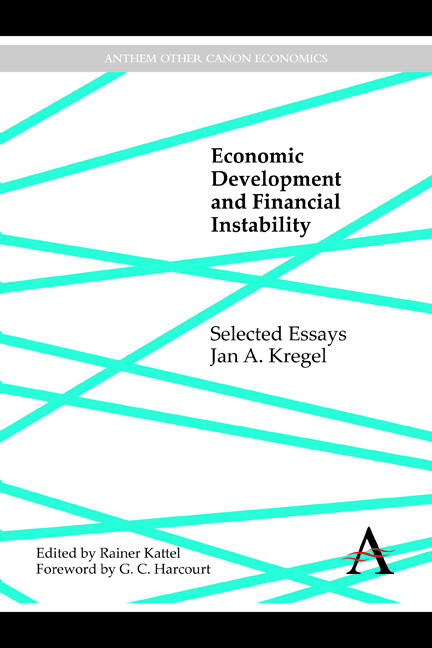Book contents
- Frontmatter
- Contents
- Foreword
- Publication History
- I Theoretical Discussions
- 1 Financial Markets and Economic Development: Myths and Institutional Reality
- 2 External Financing for Development and International Financial Instability
- 3 Capital Flows: Globalization of Production and Financing Development
- 4 Some Risks and Implications of Financial Globalization for National Policy Autonomy
- 5 Two Views on the Obstacles to Development
- 6 Can We Create a Stable International Financial Environment that Ensures Net Resource Transfers to Developing Countries?
- 7 Natural Instability of Financial Markets
- 8 Trying to Serve Two Masters: The Dilemma of Financial Regulation
- II Finance for Development
- III The Crisis in the US and the EU
- Index
8 - Trying to Serve Two Masters: The Dilemma of Financial Regulation
from I - Theoretical Discussions
Published online by Cambridge University Press: 05 November 2014
- Frontmatter
- Contents
- Foreword
- Publication History
- I Theoretical Discussions
- 1 Financial Markets and Economic Development: Myths and Institutional Reality
- 2 External Financing for Development and International Financial Instability
- 3 Capital Flows: Globalization of Production and Financing Development
- 4 Some Risks and Implications of Financial Globalization for National Policy Autonomy
- 5 Two Views on the Obstacles to Development
- 6 Can We Create a Stable International Financial Environment that Ensures Net Resource Transfers to Developing Countries?
- 7 Natural Instability of Financial Markets
- 8 Trying to Serve Two Masters: The Dilemma of Financial Regulation
- II Finance for Development
- III The Crisis in the US and the EU
- Index
Summary
1. A Brief History of How U.S. Banking Regulation Tried to Serve Two Masters
In the United States, the federal government has focused on serving the “second master” through prudential regulation and control of the financial institutions that provide the means of payment. Indeed, the Constitution reserves for the federal government the ability to incur debt and coin money. However, the Constitution does not make provisions for a central bank, or for private business charters with limited liability. Thus, individual states cannot issue currency, but they can charter private banks that issue promises to pay specie. In fact, these state bank notes provided the country's basic means of payment until the middle of the nineteenth century.
The individual states had a clear preference for the “first master,” and states often chartered banks with a view to provide cheap sources of finance for the development of the state. The result was a dual system of regulation and supervision, federal and state, which further complicated the task of designing a financial system that would serve the two masters.
Early federal regulation thus concentrated on regulating the specific types of payments that circulated as substitutes for specie, rather than the financial institutions that issued them. In addition to providing financing for the Civil War, the 1864 National Bank Act was a response to the proliferation of state-chartered private and state-owned banks and their issue of bank notes subject to only minimal regulation, frequent fraud, and default.
- Type
- Chapter
- Information
- Economic Development and Financial InstabilitySelected Essays, pp. 119 - 132Publisher: Anthem PressPrint publication year: 2014



